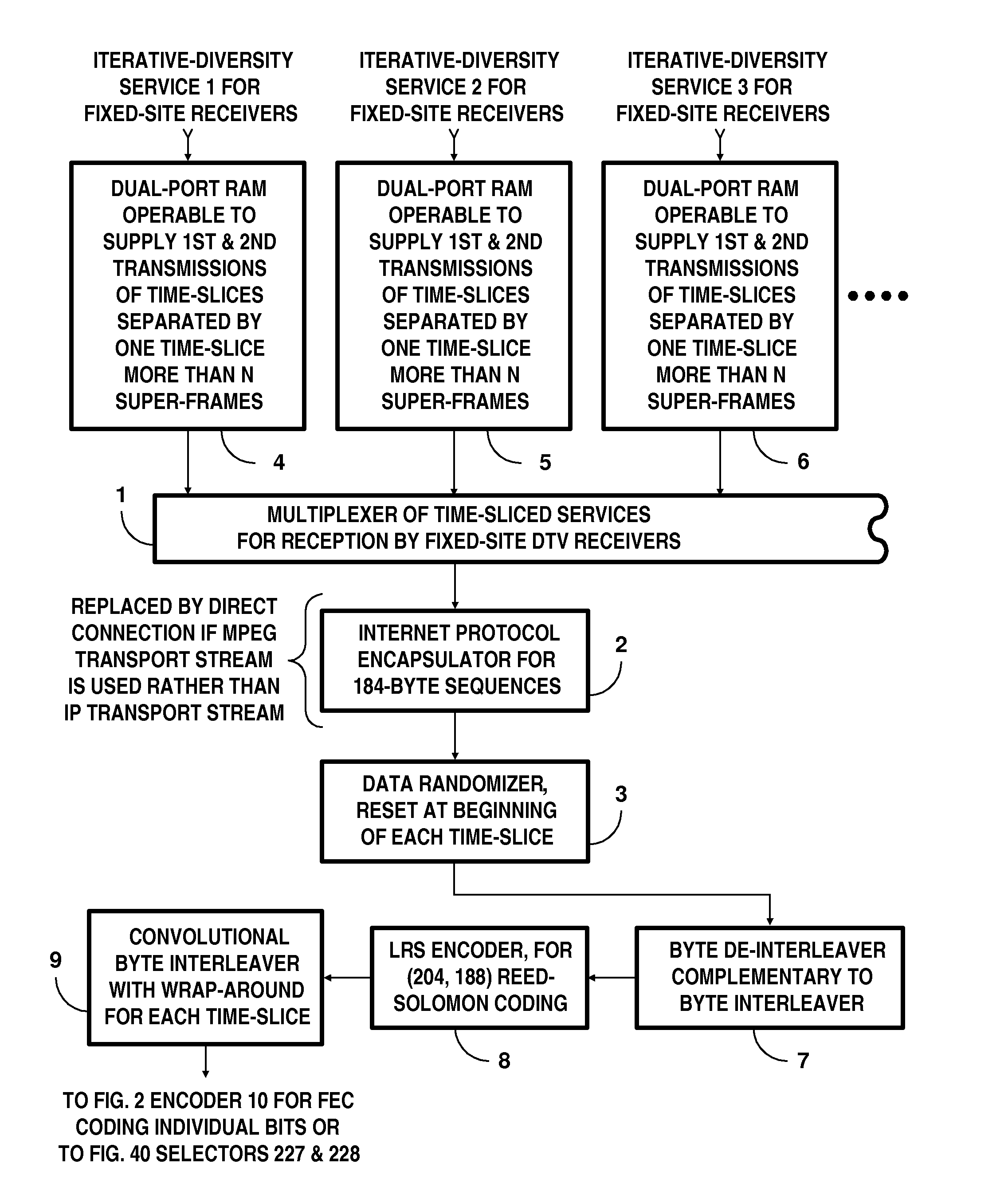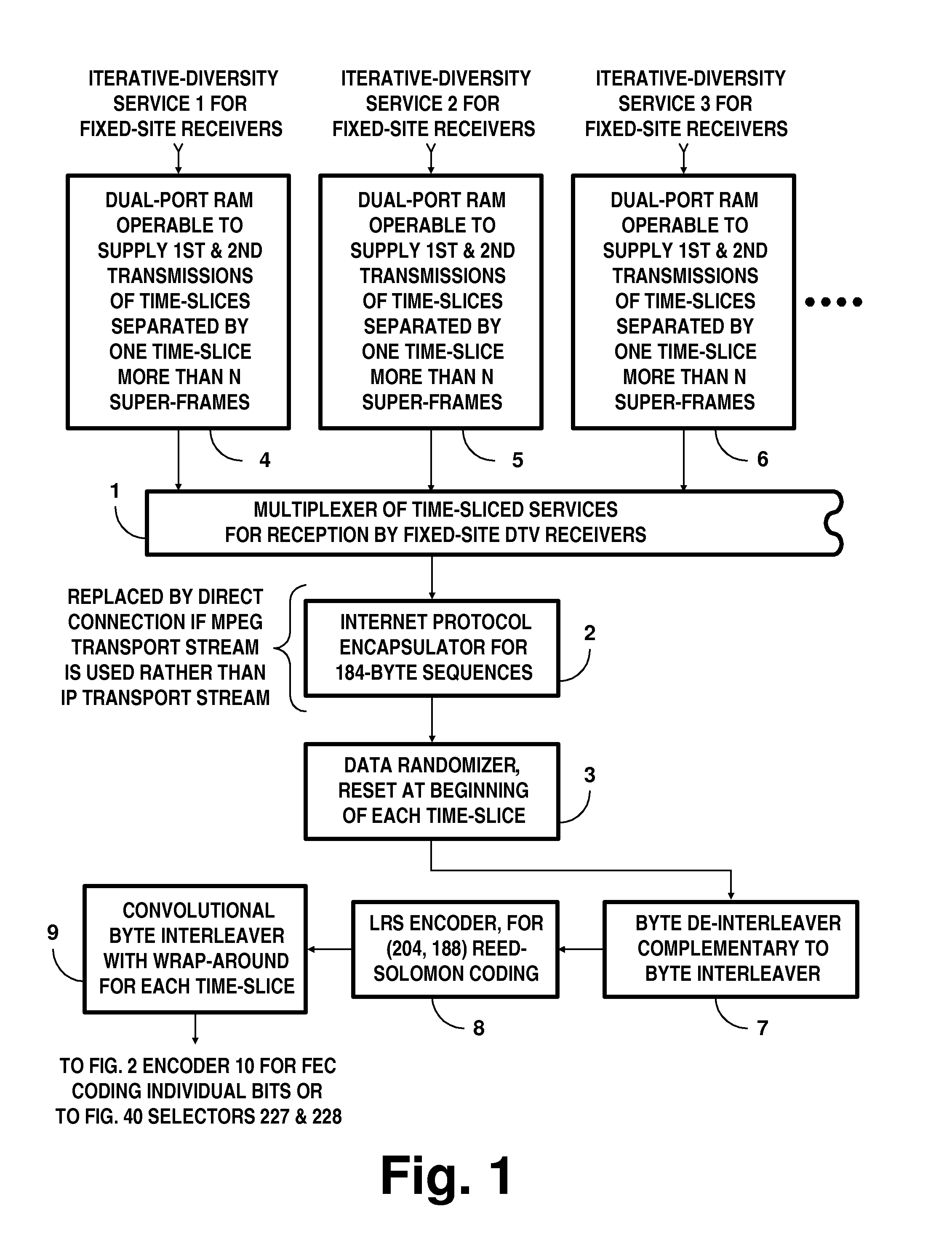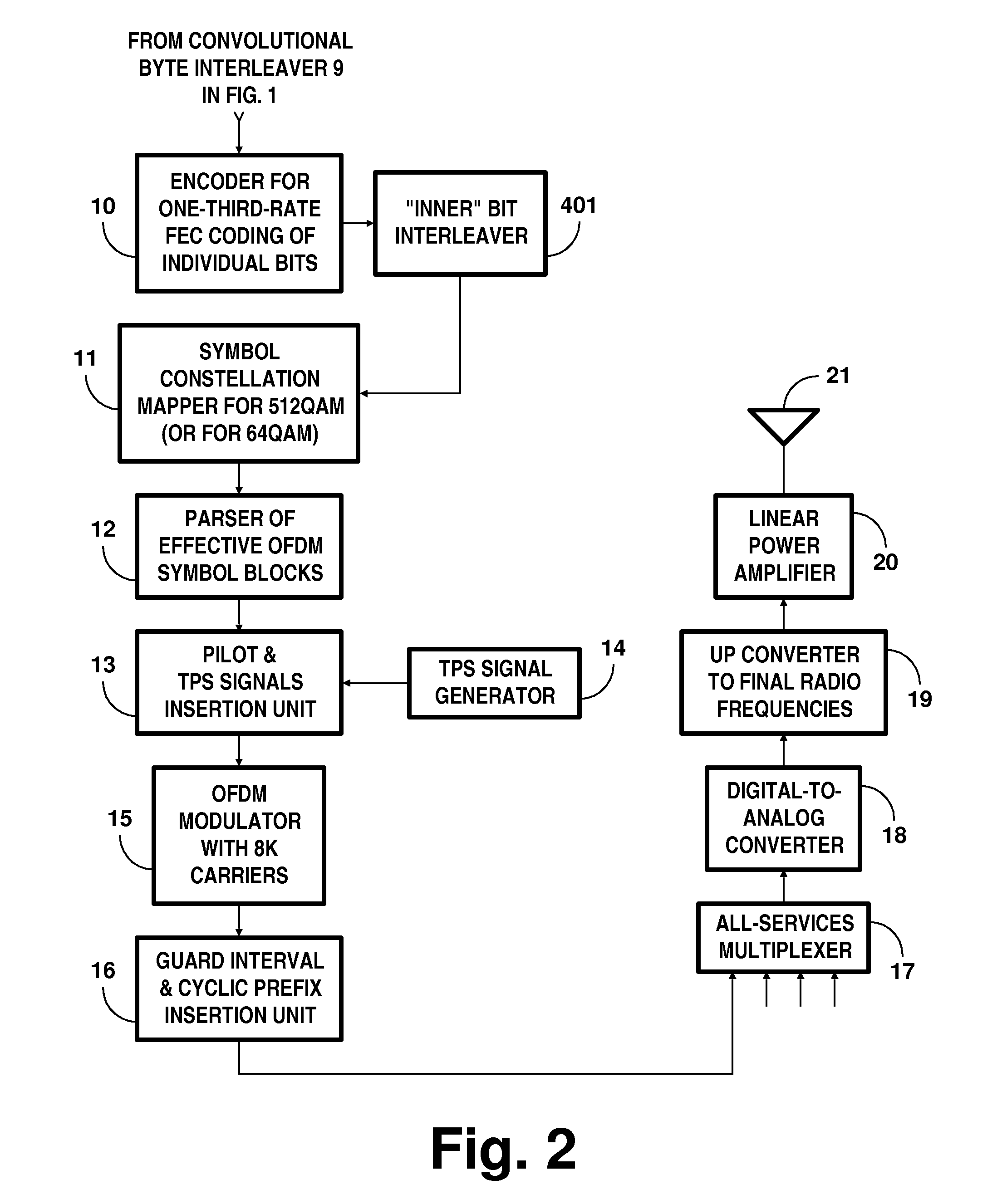COFDM broadcast systems employing turbo coding
a broadcast system and turbo coding technology, applied in the field of broadcast systems employing turbo coding, can solve the problems of affecting the reception of television, affecting ldpc codes subject to error floors, etc., to maximize the overall confidence level of bits, high confidence level, and high confidence level
- Summary
- Abstract
- Description
- Claims
- Application Information
AI Technical Summary
Benefits of technology
Problems solved by technology
Method used
Image
Examples
Embodiment Construction
[0074]FIGS. 1 and 2 together show a portion of a DTV transmitter generating COFDM signals for reception by stationary DTV receivers. FIG. 1 shows apparatus for processing frames of services to be broadcast to stationary DTV receivers, so as to generate convolutionally byte-interleaved (204, 188) Reed-Solomon codewords for iterative-diversity reception. FIG. 2 shows apparatus for further FEC-coding those RS codewords and generating subsequent COFDM signals.
[0075]A time-division multiplexer 1 for interleaving time-slices of services to be broadcast to stationary DTV receivers is depicted near the middle of FIG. 1. The time-division multiplexer 1 successively selects time-slices of these various services to be reproduced in its response, which is supplied from its output port. FIG. 1 shows the output port of the multiplexer 1 connected to the input port of an internet protocol encapsulator 2, the output port of which connects to the input port of a data randomizer 3. The internet proto...
PUM
 Login to View More
Login to View More Abstract
Description
Claims
Application Information
 Login to View More
Login to View More - R&D
- Intellectual Property
- Life Sciences
- Materials
- Tech Scout
- Unparalleled Data Quality
- Higher Quality Content
- 60% Fewer Hallucinations
Browse by: Latest US Patents, China's latest patents, Technical Efficacy Thesaurus, Application Domain, Technology Topic, Popular Technical Reports.
© 2025 PatSnap. All rights reserved.Legal|Privacy policy|Modern Slavery Act Transparency Statement|Sitemap|About US| Contact US: help@patsnap.com



